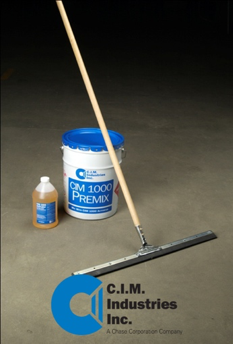
With so many epoxy, latex, polyurethane, polyaspartic and other type coatings in the market; selecting the appropriate coating to meet your project needs can be challenging. In deciding between a single part or two part coating it is useful to have a basic understanding of curing mechanisms, coating types, and selection protocols to narrow the choices.
1 Part vs 2 Part
When choosing between a single part or two part coating, the curing mechanism of a coating can play a significant role. Curing mechanisms are broken down into two categories:
- Nonconvertible Coatings, meaning the coating cures by solvent evaporation.
- Convertible Coatings, which cure by one of several polymerization mechanisms, even when solvent evaporation also occurs.
Some single part coatings, such as latex or vinyl coatings, are examples of nonconvertible coatings. These coatings typically have a very thin film thickness, shorter dry times and can be problematic when over-coating since the solvents in the over-coating material may soften or dissolve the coating.
2 Part
Two part convertible coatings include epoxies, polyurethanes, polyureas, polyaspartics, and polysiloxanes. It is  important to be pay attention to the proper mixing ratio while working with these coatings (parts A and B), and be mindful of the pot life of the coating.
important to be pay attention to the proper mixing ratio while working with these coatings (parts A and B), and be mindful of the pot life of the coating.
Coating selection is limited in many parts of the world by volatile organic compound (VOC) regulations. This is common among nonconvertible coatings due to the resin involved in the curing process of the coating when subjected to large quantities of solvent. The type and chemical nature of a polymer used in two-part coating has a significant effect on characteristics of this type of coating, including mechanical and chemical resistance/durability properties. The characteristics found in two-part coatings are some of the many benefits that CIM Membranes will provide on your project.
Also read: Is a Harder Coating Better? Hardness Scale Tests Explained
Guide to Coating Selection
Whether choosing a single or two-part type coating, plan your coating selection and consult with your technical representative for product assistance. Items to consider:
- Environmental conditions
- Atmospheric or immersion
- Interior or exterior
- Chemical or secondary containment
- In-service temperature range
- Substrate
- Surface preparation
- Temperature
- Humidity
- Dew point
- Applicator skill set
- Equipment availability
- Product availability
- Safety requirements
- Life expectancy of the substrate being coated and the coating
- Budget
CIM’s two-part urethane fluid applied liners and coatings have been keeping liquids where they belong for over 35 years. Our team of technical consultants are available to assist you with product information to meet your coating needs. Please Contact us.




